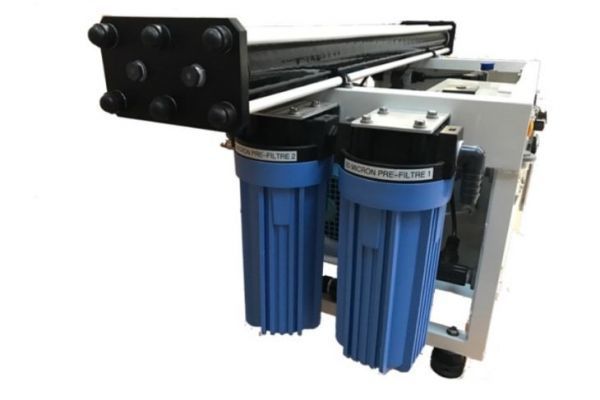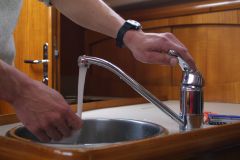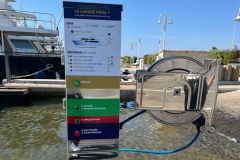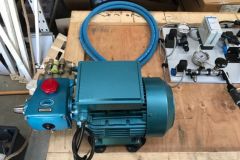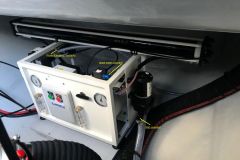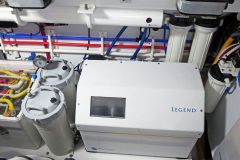There are different families of watermakers: electric, manual, attached to the engine, 24V, 220V, with or without energy recovery... Whatever the characteristics of his machine, the yachtsman must maintain it regularly so that its operation is optimal, both in terms of water quality and production flow.
Pierre Taillefer, from the Compagnie Hydrotechnique, which sells and maintains different types of machines, explains the main operations to be carried out.
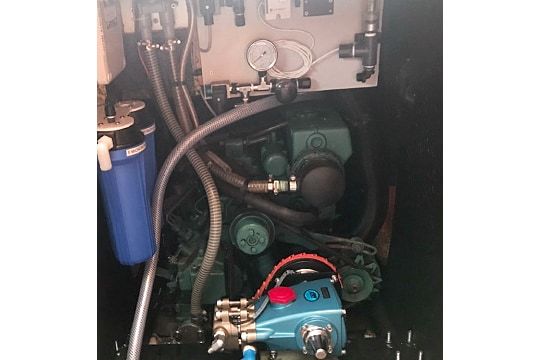
Cleaning of filters
To start the maintenance and not forget anything, it is necessary to follow the path of the sea water to the tank. The first step is to check the seawater filter, the strainer. The technician states: "It will need to be cleaned and changed as needed if it is damaged. Ditto for the 5 and 20 micron pre-filters."
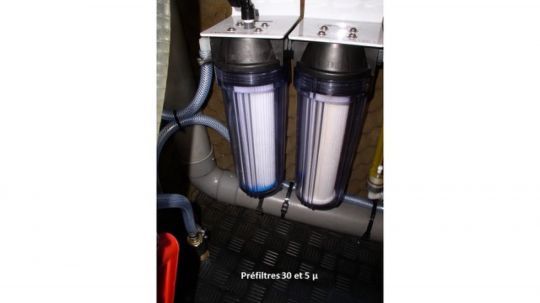
He adds: "For the low-pressure pump in between, the theoretical maintenance is between 2,000 and 3,000 hours, but in reality, we only change the seals when a leak is found or the pressure drops significantly."
High pressure pump
For conventional watermakers, the high-pressure pump should be addressed. It should be drained at 50 hours and then every 500 hours. It is generally advisable to do this before the new boating season. Pierre Taillefer explains: "For warranty purposes, it's best to use OEM oils, but generic 10W30 or 10W40 oils will do." By default, the oil should be replaced every year, because due to temperature variations, water can be found in the oil as a result of condensation.
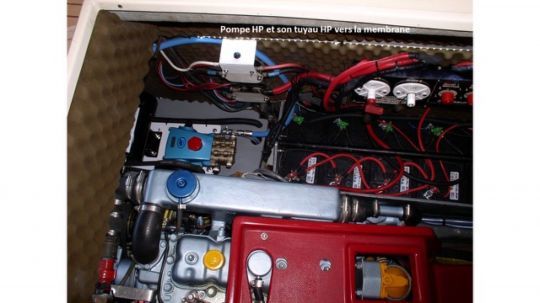
For energy recovery models, there is no regular maintenance required on the pump.
Reasoned rinsing of the membranes with fresh water
The watermaker's membrane does not require any particular maintenance or specific preventive action. It should not be left to dry out or exposed to chlorinated water or chemicals. However, the machine should be rinsed thoroughly with fresh, non-chlorinated water at the end of the season. If the period of non-use exceeds 3 months, it is advisable to circulate a biocide that prevents bacteria from developing in the membrane, causing clogging.
Depending on the region, it may be useful to provide antifreeze liquid, such as food grade glycol.
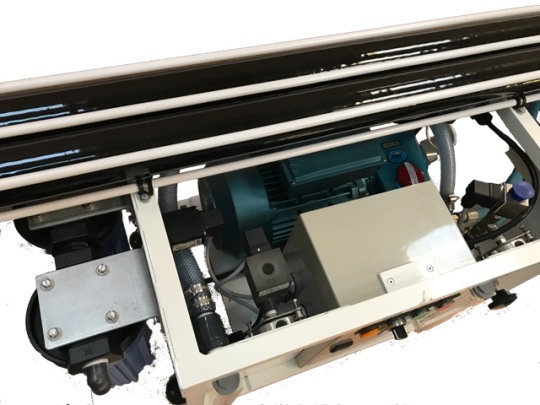
Some companies sell alkaline or acidic cleaners. The Hydrotechnical Company warns: "It is important to respect the doses. It is a last resort and should not be used regularly. Overdosing damages the plastics and reduces the life of the membrane."
The connections will also be checked. No particular operation is required for the solenoid valves and the pressure regulator block.
Post-filter cleaning
The filters in the fresh water system should also be checked, more so when returning to the boat. The carbon filter is usually cleaned with the machine's automatic rinse. The mineralization filters should be changed.
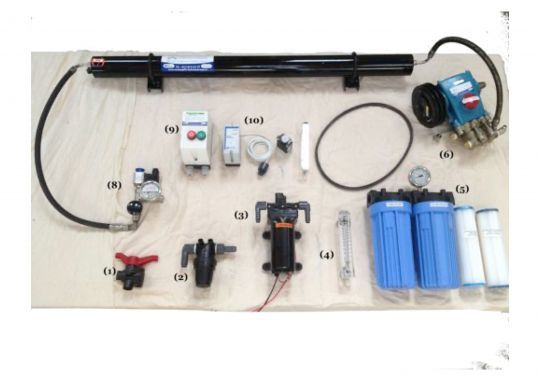
For the electrical part, only a few operations are required: tighten all the terminals, especially in 12 or 24 VDC systems, on the main power circuit breaker, on the control box, on the connection boxes of the low pressure and high pressure pumps.
By ensuring that all of these checks are done, the boater will enjoy good water quality without worry.
